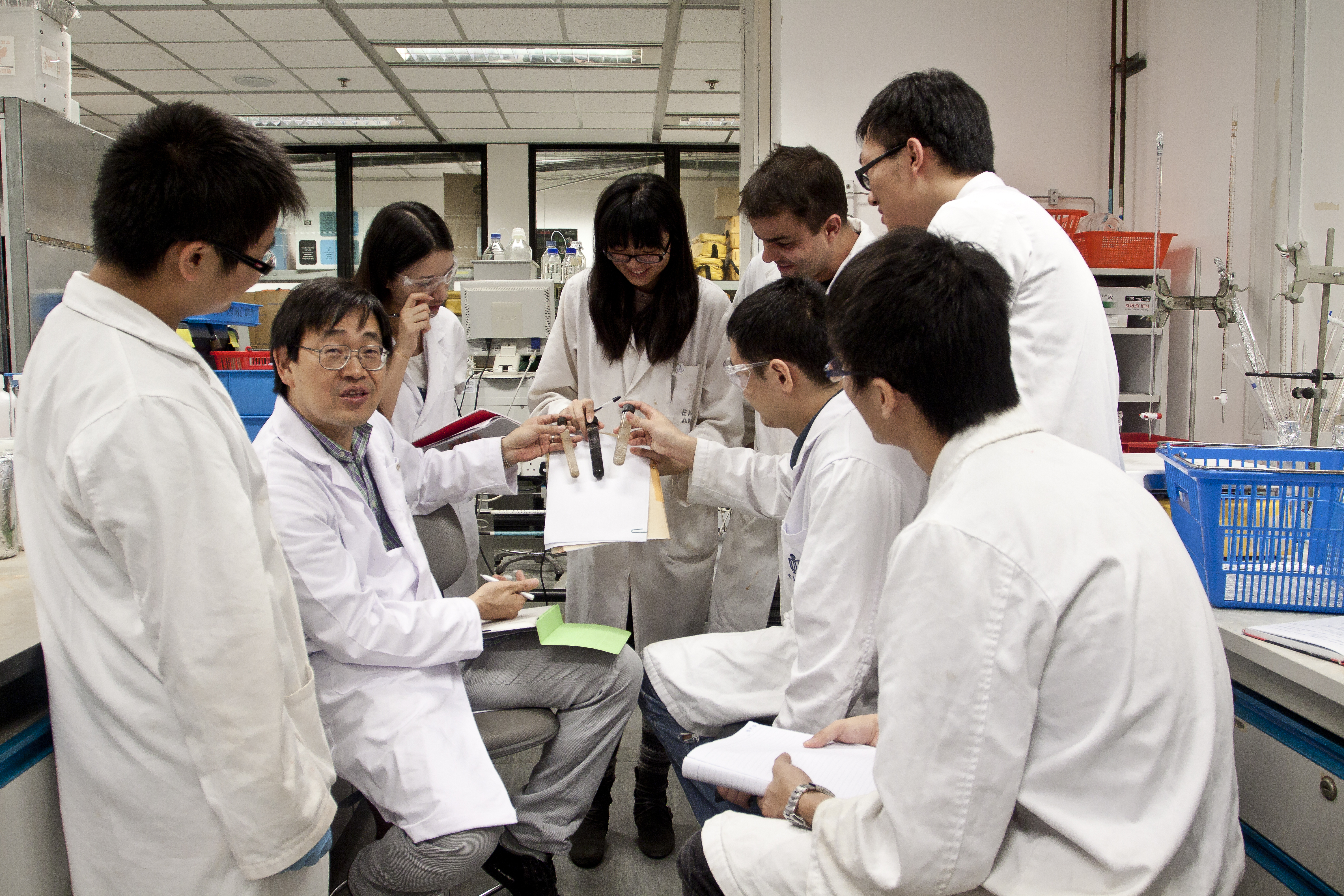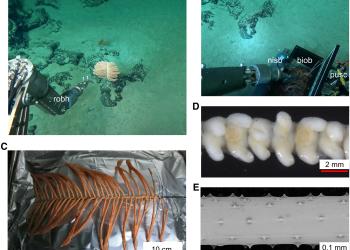HKUST Invents a Novel Sewage Treatment Technology - The 'SANI' Process Minimizing 50% Cost and 90% Sewage Sludge Production
A research team from the Hong Kong University of Science and Technology (HKUST), led by Prof Guanghao Chen of the Department of Civil and Environmental Engineering, has invented a sewage treatment technology, known as the ‘Sulphate Reduction, Autotrophic Denitrification and Nitrification Integrated (SANI)’ Process. This novel technology successfully minimizes the adverse environmental impact of sewage treatment plants by eliminating 90% of sewage sludge production, minimizing energy consumption as well as odour and greenhouse-gas emission. Moreover, it largely reduces the sewage treatment cost and space requirement by 50%.
The SANI Process using sulphate reduction bacteria, integrated with seawater toilet flushing system of Hong Kong, has been recognized by the International Water Association (IWA) as one of the most successful water management systems around the world. In recognition of Prof Chen’s remarkable research achievements, he has recently been elected as a Fellow of the IWA. He is the first Hong Kong scholar receiving this prestigious honor.
Prof Chen said, “Conventional biological wastewater treatment technology makes use of microbes to clean up sewage by converting organic pollutants into carbon dioxide. Since these microbes grow rapidly at an average rate of 0.8 kg of sludge per cubic meter of sewage treated resulting in the production of 2,000 tonnes of sludge every day in Hong Kong which finally becomes sludge. Handling of the sewage sludge incurs high costs and requires the use of sludge incinerators. The SANI Process, on the other hand, can minimize the sludge production rate by 90% to below 200 tonnes per day, hence reducing the treatment costs and space requirement for wastewater treatment by over 50%.”
Prof Mogens Henze, Editor-in-Chief of Water Research – a renowned international journal and Head of the Department of Environmental Engineering of the Technical University of Denmark, opined that the SANI Process, when integrated with seawater toilet flushing and grey water reuse, gives the best results. Its strength lies in reducing freshwater demand and minimizing sludge production. It provides an economic and sustainable solution for water-scarce coastal cities in Mainland China.
Prof Chen’s research team partners with the Delft University of Technology in the Netherlands and the University of Cape Town in South Africa, in collaboration with the Hong Kong Airport Authority, the Water Supplies Department and the Drainage Services Department. This research project started in 2004, followed by a pilot test at the Tung Chung Sewage Pumping Station for two years. This technology has now successfully passed the medium-scale test at the capacity of 10 tonnes of sewage every day.
This technology has also drawn the attention of the UNESCO-IHE Institute of Water Education which finds it an effective and sustainable water resource. Ir Lee-tak Ma, Director of Water Supplies, commented, “The SANI Process perfectly integrates the freshwater system and the seawater system. This innovative sewage treatment technology maps out an excellent plan for developing the seawater toilet flushing system, as well as the reuse and recycling of saline sewage.”
HKUST President Tony F Chan said, “The HKSAR Government has recommended six industries, including environmental industry, to boost the economic development of Hong Kong. The SANI Process vividly represents a local invention and technology breakthrough. We hope that this green technology will be widely used in Hong Kong, and then be adopted in the coastal cities in the Mainland and other parts of the world in future.”
As the first Asian scholar to be elected as Fellow by IWA, Prof Guanghao Chen was invited to deliver plenary keynote speeches at the Leading Edge Technology (LET) Conferences in the US and Japan. Prof Chen and Dr Samuel H K Chui, a Senior Environmental Protection Officer of the Environmental Protection Department who participates in the project as an individual scholar, have been invited by the IWA to present this technology at various major water treatment conferences held in the US, the Netherlands, Japan and Mainland China.
Footnote:
The Pilot Test Plant in Tung Chung Sewage Pumping Station had showed a 90% sludge reduction at the capacity of 10 cubic meters of sewage per day from 2007 to 2010 while the Pilot Test Plant in Shatin Sewage Treatment Works had showed a 60-70% sludge reduction at the capacity of 1,000 cubic meters of sewage per day from 2013 to 2015. The discrepancy between the performances at the two locations using the same SANI® Process is caused by differences in (1) sewage characteristics, (2) sewage treatment capacity, (2) reactor design, and (4) operation modes.
For media enquiries, please feel free to contact :
Kit Yip
Tel: 2358 6313
Email: kityip@ust.hk










